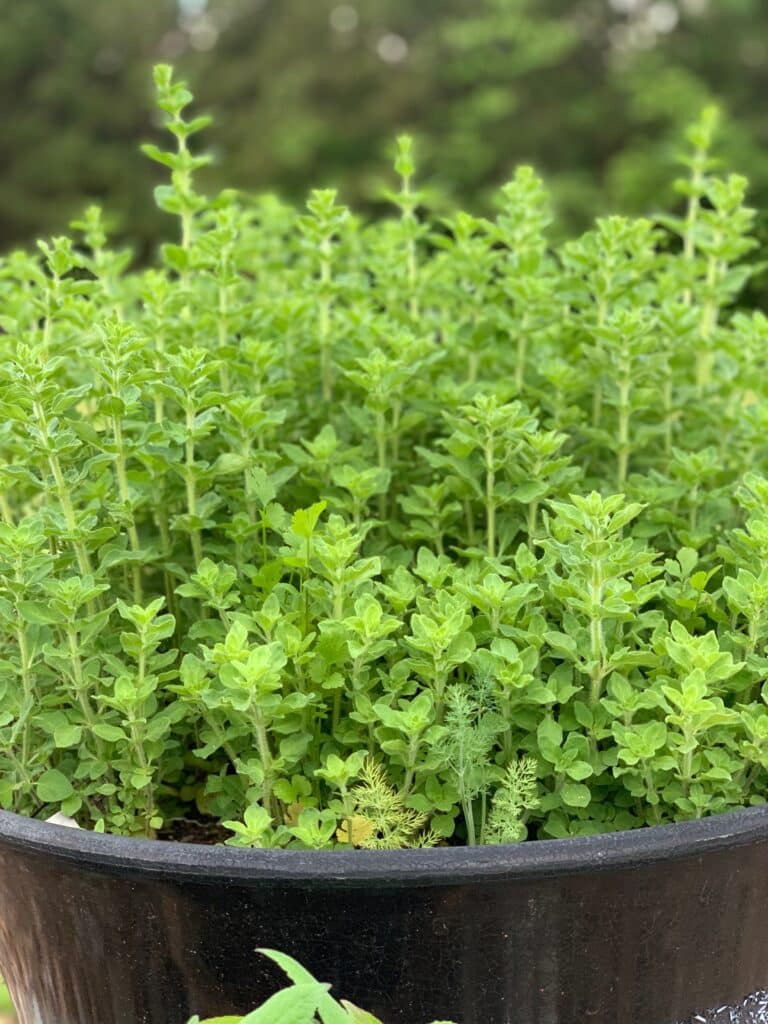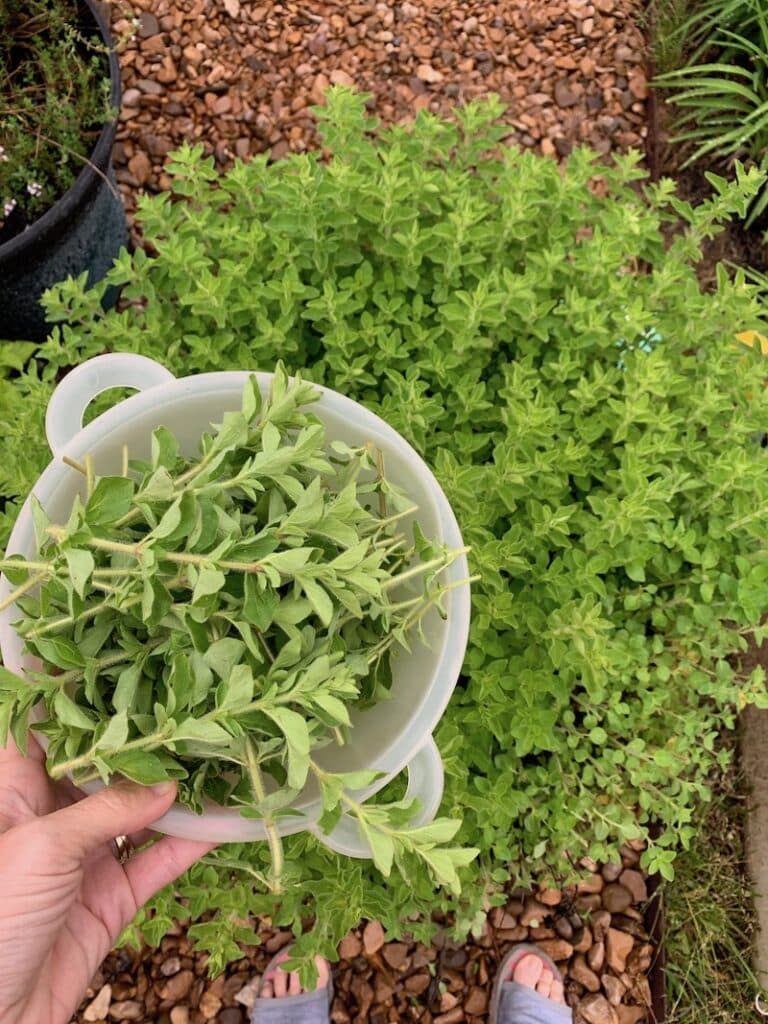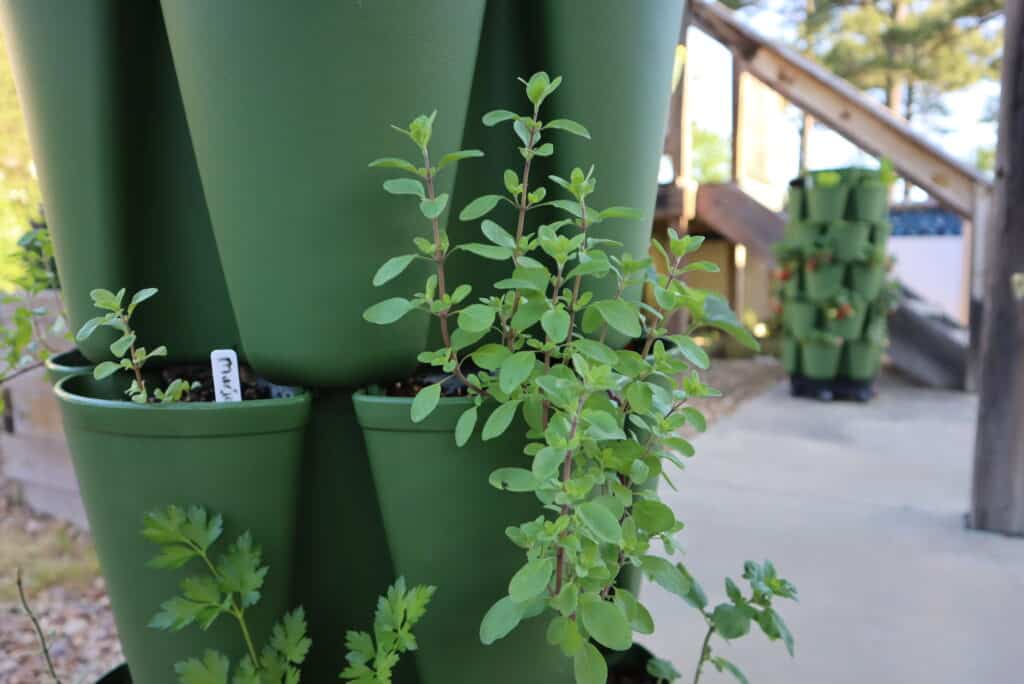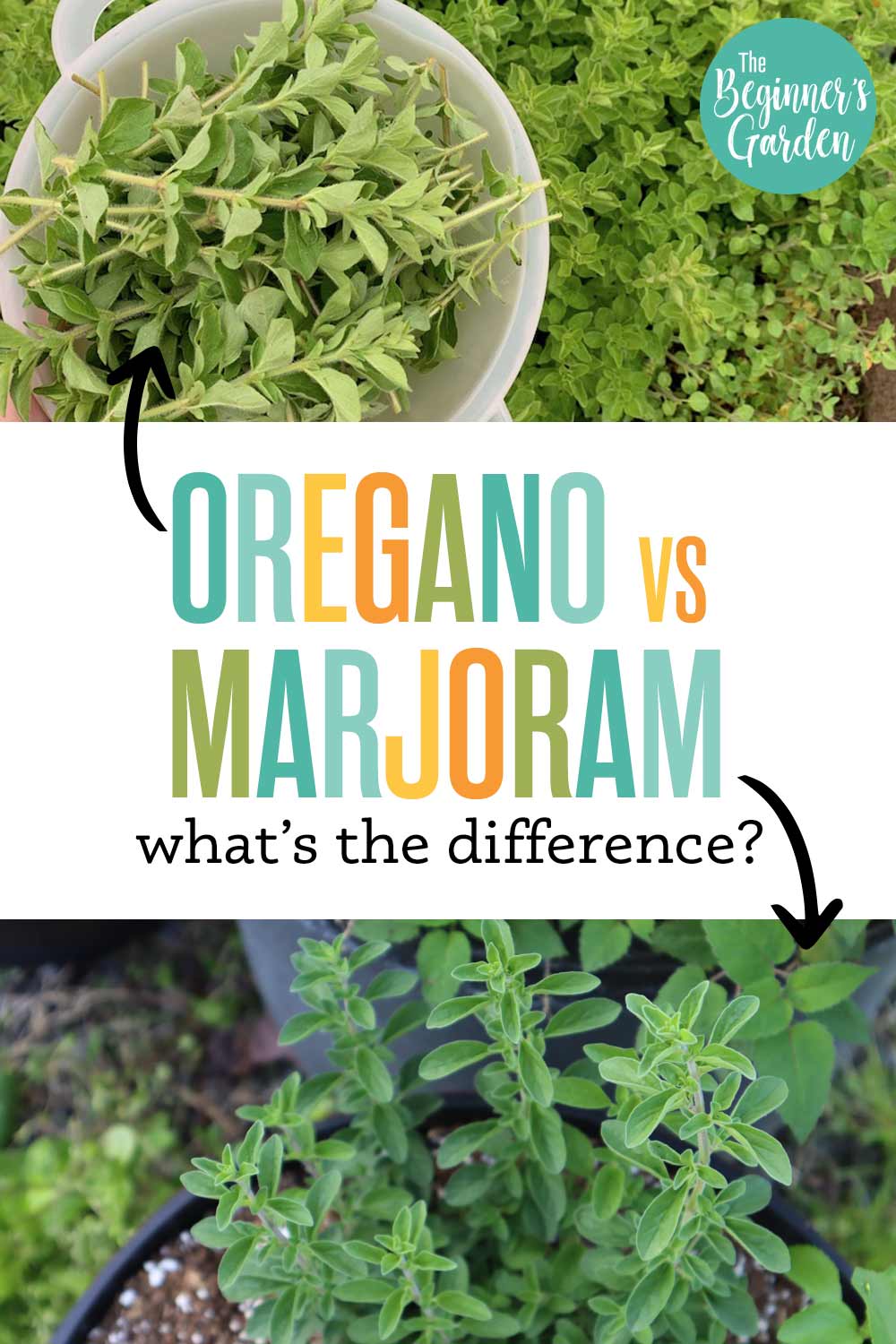Oregano vs. Marjoram
What is the difference between oregano and marjoram? These herbs look similar, and often recipes call for whichever you have on hand. But do they grow the same? Do they really taste the same in the kitchen? Short answer — no.
Before you start planting oregano and marjoram, let’s learn the differences, medicinal benefits, and growing needs of oregano vs. marjoram. Plus, I’ll even share some culinary tips to enjoy the plants in the best way.
For a more comprehensive discussion about the differences between oregano and marjoram, you can listen to this episode of the Beginner’s Garden Podcast below. Otherwise, keep reading for the high points.
Oregano vs. Marjoram
Let me share the differences between oregano vs. marjoram with these topics:
- Oregano vs. Marjoram Background
- History of Oregano
- Oregano Plant Description
- Varieties of Oregano
- How To Grow Oregano
- Culinary Tips for Oregano
- Oregano Medicinal Benefits
- History of Marjoram
- Marjoram Plant Description
- How To Grow Marjoram
- Culinary Tips for Marjoram
- Marjoram Medicinal Benefits
Don’t forget to snag your 2024 Garden Planner now before the new year!
Oregano vs. Marjoram Background
Let’s start with the basics. Oregano and marjoram are both from the Lamiacaeae family. Oregano translated from the Greek word means “joy of the mountain,” but the word is used loosely to also describe several herbs from the mint family — including a few from the thyme family as well. Oregano grows wild throughout the Mediterranean making them hard to classify neatly. Sometimes marjoram is sold as oregano, even though they are different and used differently.
Mexican oregano (Lippa Graveolens) isn’t part of the same family, though it can be used interchangeably, and it lends itself well to Mexican cuisine because of its citrus and anise flavor profile. We won’t be discussing Mexican Oregano in this article.
Oregano (Origanum Vulgare) History
Oregano’s history dates back to ancient Greece where it was used as a remedy for narcotic poisons and convulsions as well as poultice for deep wounds. The ancient Romans believed it brought happiness at weddings and they would often weave oregano into bridal wreaths. In the medieval times the powerful aroma of oregano was mixed with straw as a “stewing herb” in floor coverings.
Oregano Plant Description
The oregano plant is a bushy perennial that can grow up to 2ft tall. In the late summer the plant produces tiny flowers that are attractive to bees. Oregano leaves contain more thymol than sweet marjoram and are definitely stronger and more pungent in flavor, especially when grown and harvested in warm weather months with full sun.

Varieties of Oregano
Oregano comes in four varieties for you to grow and enjoy: Greek Oregano, Italian Oregano, Za’atar, and Oregano Hot and Spicy.
Greek Oregano – Origanum Vulgare var. Hirtum
Greek Oregano smells like peppery thyme and has a licorice-like flavor. It tends to make you think of Greek food and pairs well with Greek cuisine. Greek oregano is easy to spot by its white flowers.
Italian Oregano – Origanum Vulgare
Italian oregano is not as nuanced as Greek Oregano and has a slightly sweet flavor. This plant has purple flowers.
Za’atar – Origanum Syriacum
Za’atar is a variety of oregano that grows wild in the Middle East. There are many herb and seed blends by the same name that you can buy.
Oregano Hot and Spicy – Origanum Vulgare ‘hot and spicy’
Oregano Hot and Spicy has an irregular growth habit compared to other oregano and will tumble over the side of the container in which it is grown. When used in cooking, it lends a strong and pungent peppery bite and can be used in place of chiles.
How to Grow Oregano
Growing oregano can be fairly simple as long as you follow these tips. Oregano thrives in sandy soil and is most flavorful when you harvest it before it blooms, although the flowers are edible. The roots of an oregano plant are aggressive; ensure you plant it alone to keep it from crowding out other plants.
Oregano tends to need a lot of water as well. If you notice oregano’s leaves wilting, simply add water. It’s surprisingly resilient and will perk up with a good drink.
Oregano is a perennial down to Zone 4, which means that even though it may die back in the winter, it should return. Once you plant one plant, with minimal care, you shouldn’t have to plant again.
Culinary Tips For Oregano
When you are ready to do some cooking with oregano, which is a great idea, you’ll want to consider the flavor it lends and how it handles heat.
The younger, more tender oregano leaves have the most flavor, so make sure to add a few chopped up leaves to your pizzas and Italian recipes. Oregano is best cooked with food and tends to hold up well in heat. Keep in mind, oregano is potent, so a little goes a long way.

Oregano Medicinal Benefits
Oregano has medicinal benefits that you may find helpful to know. Carvacrol has antiviral and antifungal properties. These also give oregano its spicy flavor. Thymol content, tannins, and bitters can also be found in oregano which help oregano to be antispasmodic, a stomach tonic, an astringent, and expectorant, a sedative, and a carminative.
If you want to infuse the fresh leaves they can help with headaches, menstrual cramps, insomnia, and digestion. An herbal balm mixed with lavender can help ease pain and stiffness during a massage. When using oregano in an infusion of a hot compress it can help to clean and reduce swelling of cuts and wounds.
History of Marjoram (Origanum Majorana)
Marjoram, like oregano, is native to the Mediterranean and the Middle East and is rare to find fresh in the grocery stores here in the United States. This is why it’s a great crop to grow, so that you’ll have it fresh for your table.
Marjoram Plant Description
The marjoram plant is a half-hardy perennial and is also frost tender. In other words, when grown in appropriate garden zones (generally zones 8 and above), it will survive the winter, but when grown in zones experience colder winters (generally zones 7 and below), it is grown as an annual crop.
If you rub the leaves together between your fingers you will smell a floral scent. Not only does marjoram have an interesting scent it also has a distinctly sweet flavor that tends to be a bit woodsy. In size, marjoram is smaller than oregano and also a less aggressive plant.

How To Grow Marjoram
Marjoram plants tend to be shrubby in growth, but will usually stay well behaved. In fact, marjoram is a great companion crop to taller plants like rosemary. You’ll want to make sure your soil is well-drained but stays moist with adequate soil nutrients.
Marjoram plants can be difficult to find in garden centers and nurseries. Planting from seed is usually the best way to ensure you are growing true marjoram. Start seeds indoors about six to eight weeks before your average last frost date, and plant out after the frost has passed.
Marjoram plants enjoy full sun and the leaves can be harvested throughout the growing season. However, they are more flavorful for your cooking if you harvest them before the plant blooms with flowers.
After blooming and the flowers dry out, cut the stems back to the central stem that include the leafy part of the plant. This will create new growth and often your marjoram plant will try to flower again.
Keep in mind that in order to keep your plants healthy, marjoram plants need a fair amount of water, but not as much as oregano.
Culinary Tips for Marjoram
Marjoram has a very light flavor and is wonderful for pasta sauce, on pizza, in herbal vinegars and oils, sprinkled on herb breads and is very tasty in chicken dishes. You can try mixing marjoram with other herbs in the same family like rosemary and thyme and make a rub for other meats.
It’s not a good idea to cook marjoram too long, no longer than 5-10 minutes of cooking. In fact, marjoram tastes best when it’s used fresh in your cooking. This plant has a sweet taste that doesn’t hold up well through the drying process, so to get the biggest impact of it’s flavor, you’ll want to consume it fresh. If you do want to dehydrate marjoram, take care to use very low heat, or even better, hang dry.
Marjoram Medicinal Benefits
There are a lot of medicinal benefits that marjoram has to offer like tannins, carotenes, Vitamin C, and essential oil which all help as a stomach tonic, antispasmodic and a sedative. As an infusion marjoram is often used to help with digestion and menstrual cramps.
Marjoram oil can be used in aromatherapy massage to ease aches and pains and also helps stress-related stomach issues. If you combine marjoram with a carrier oil and lavender it can be used to help treat insomnia.

As we have compared the differences of marjoram and oregano, we’ve discussed how these two herbs can often be confused. But despite their visual similarities, oregano and marjoram have distinct flavors and traits. I hope you enjoyed learning, growing and eating both oregano and marjoram right from your very own garden.
Comment below and tell me your favorite way to use oregano and marjoram.
Do you get overwhelmed with garden planning?

Subscribe here for my best tips to plan your garden in just 7 days -- all for FREE.
Plus, I'll send you my "In the Garden E-mail" on Fridays, periodic updates on garden resources relevant to you, and you'll receive access to my entire bank of free garden downloads!
You are also agreeing to our privacy policy.

